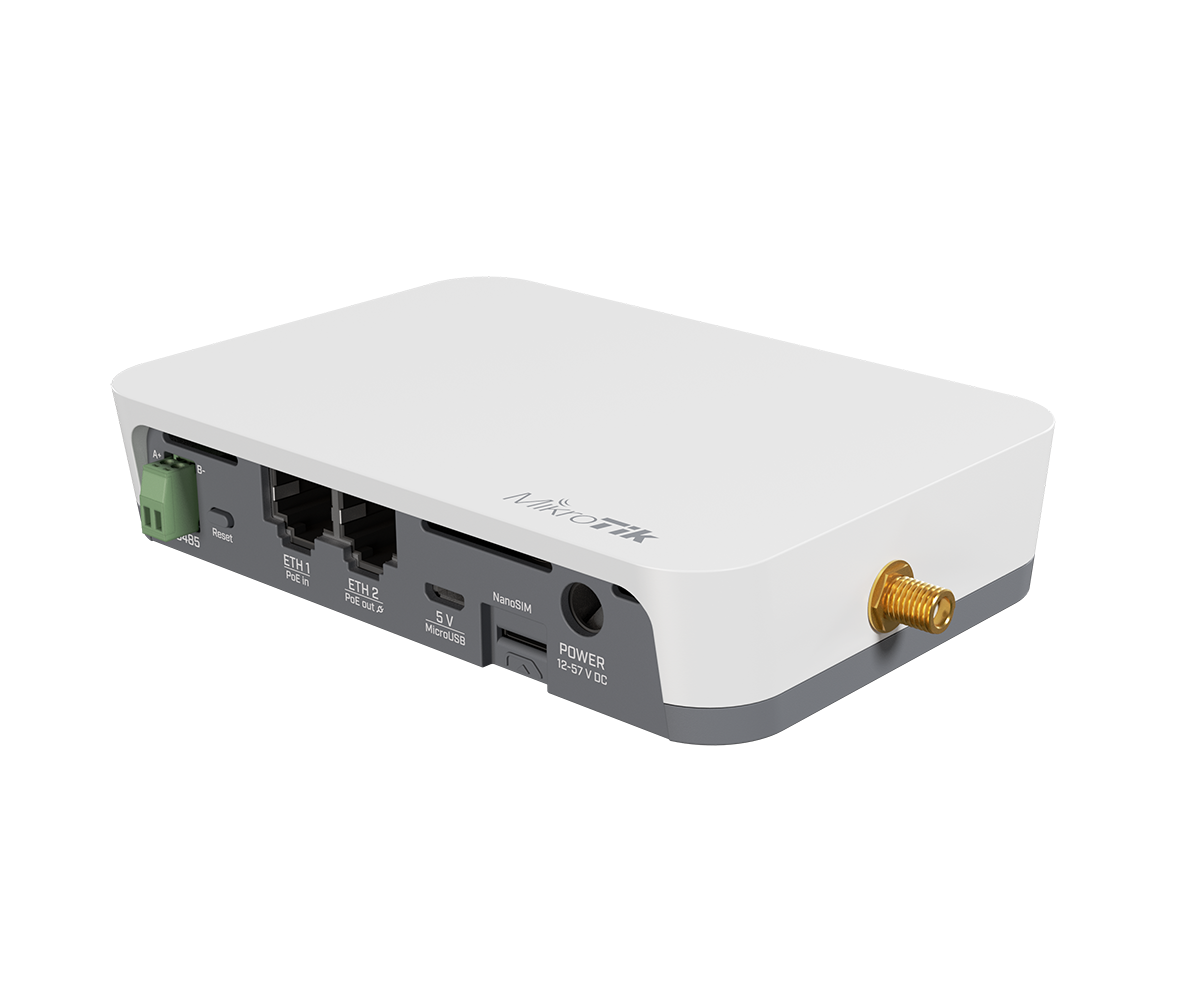-
€
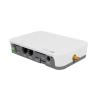
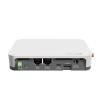
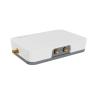
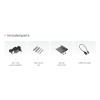
El MikroTik KNOT LR8G es una puerta de enlace IoT universal compatible con múltiples tecnologías. Admite transmisión LoRa en la banda de 868 MHz y LTE CAT-M (NB2 y M1). Esto permite la transmisión inalámbrica de datos desde ubicaciones remotas sin necesidad de acceso a internet ni de crear una transmisión LTE. Además, el KNOT LR8G es compatible con GPS, Bluetooth 5.2 y Wi-Fi 4 N300. Permite el rastreo GPS y la conexión de sensores inalámbricos Bluetooth/Wi-Fi. Dispone de dos puertos Fast Ethernet (10/100 Mbps) para la comunicación. El dispositivo admite tres tipos de alimentación: entrada PoE (18-57 V DC), microUSB (5 V DC) y entrada DC (12-57 V DC). Presenta un consumo de energía muy bajo, de hasta 6 W. Con los accesorios incluidos, el dispositivo puede montarse en la pared o en un carril DIN.
LoRa 868 MHz, CAT-M/NB
Este producto admite la transmisión LoRa en la frecuencia de 868 MHz. Se puede integrar con una red inalámbrica existente para transmitir datos desde los sensores conectados, actuando como una puerta de enlace LoRa. El KNOT LR8G admite la transmisión CAT-M1 y CAT-NB2, lo que permite la gestión y monitorización remotas sin necesidad de la transmisión LTE estándar, mucho más costosa.

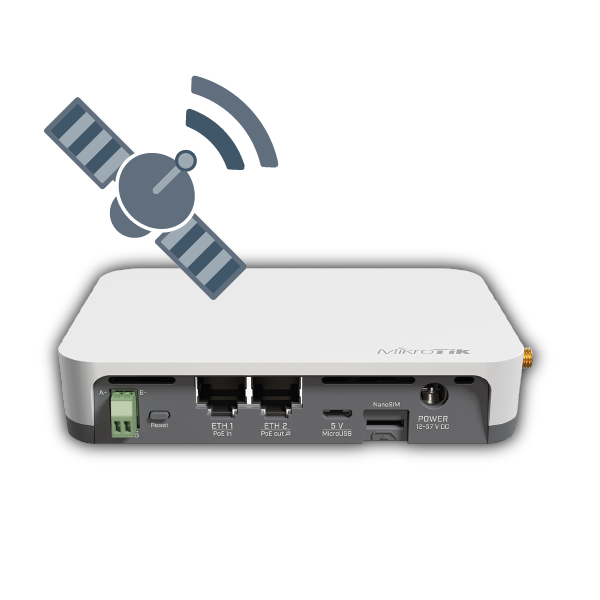
GPS
El dispositivo admite transmisión GPS (GNSS), muy útil en la industria automotriz. En combinación con LTE CAT-M/NB, permite el rastreo de ubicación en tiempo real. Esta funcionalidad será muy apreciada por las empresas de transporte que necesitan monitorear la ubicación de sus vehículos.
Bluetooth, Wi-Fi 4 N300
El KNOT LR8G también proporciona comunicación inalámbrica local, incluyendo la conexión de sensores. Es compatible con los protocolos Bluetooth 5.2 y Wi-Fi 4 N300 (IEEE 802.11 b/g/n) en la banda de 2,4 GHz. La transmisión Wi-Fi facilita su implementación en lugares con amplias redes inalámbricas, como centros comerciales, restaurantes y hoteles.
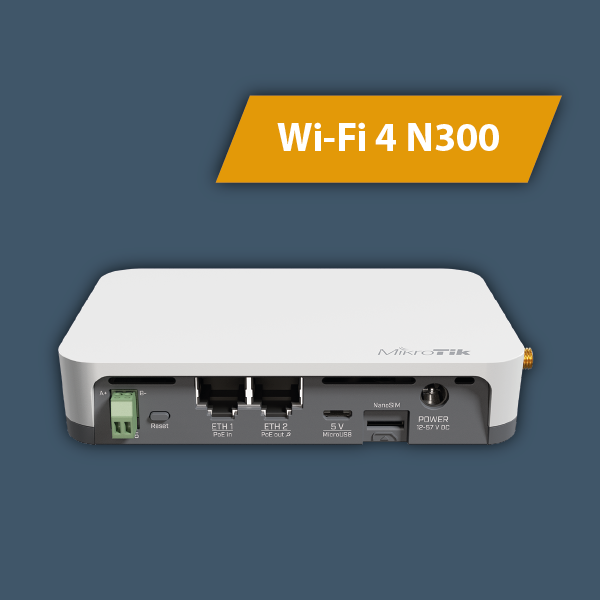
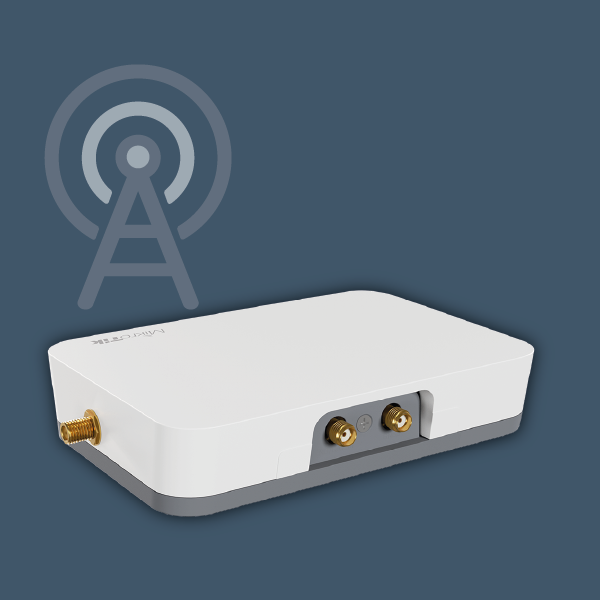
Posibilidad de conectar antenas externas
Tres conectores SMA se encuentran en el exterior de la carcasa, lo que permite conectar antenas externas para ampliar el alcance. Puede usar antenas para transmisiones GNSS (GPS), LoRa y NB/CAT-M. La conexión es muy sencilla; no es necesario abrir la carcasa; los conectores se encuentran en el exterior.
Tres métodos de suministro de energía, salida PoE
El KNOT LR8G se puede alimentar de tres maneras: tiene una entrada PoE en el puerto Ethernet (18-57 V DC), una toma de DC (12-57 V DC) y un puerto micro USB (5 V DC). Además, el segundo puerto Ethernet cuenta con una salida de alimentación PoE, lo que permite alimentar otro dispositivo. Una ventaja clave de este producto es su bajo consumo de energía: ¡el KNOT LR8G solo consume 6 W!
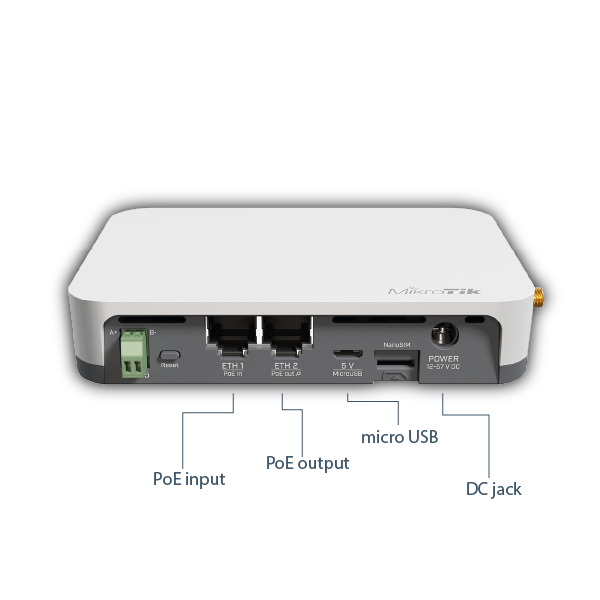
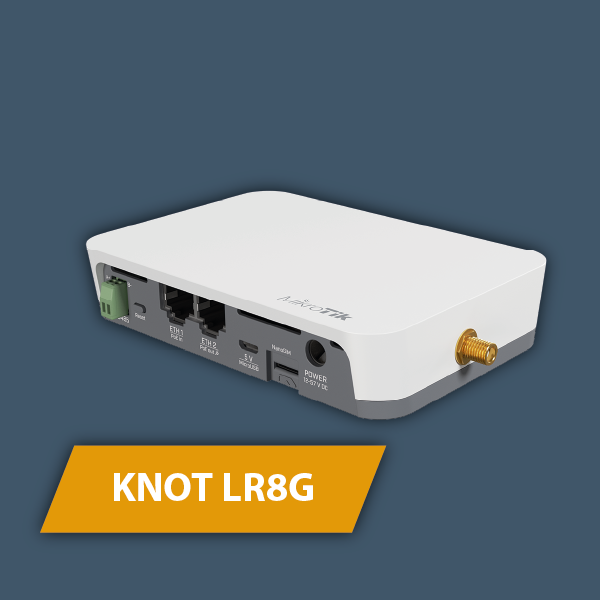
Numerosas aplicaciones
Gracias a su compatibilidad con múltiples estándares, conectividad inalámbrica, amplias opciones de gestión y conectividad Modbus, el KNOT LR8G es ideal para una amplia gama de aplicaciones de IoT. Ofrece una solución excelente y rentable para la monitorización (por ejemplo, en combinación con sensores de temperatura o humedad), el seguimiento de objetos, la adquisición de datos de sensores y la automatización. Gracias a su precio, puede ser utilizado tanto por grandes empresas como por pequeñas empresas.
Especificación
| MikroTik RB924iR-2nD-BT5&BG770A&R11e-LR8G | ||
| Procesador |
QCA9531 Velocidad de reloj: 650 MHz |
|
| Arquitectura del procesador | MIPSBE | |
| Memoria RAM | 64 MB | |
| Tipo de RAM | DDR2 | |
| Memoria incorporada | 128 MB NAND | |
| Número de puertos 100M | 2 | |
| Puerto USB | 1 puerto microUSB tipo AB | |
| Propiedades Wi-Fi | 2,4 GHz: IEEE 802.11 b/g/n | |
| Módulo de radio Wi-Fi | QCA9531 | |
| Ganancia de energía de Wi-Fi | 1,5 dBi | |
| Ancho de haz de la antena Wi-Fi principal | 360° | |
| Modelo GNSS | MT3337V | |
| Estándar GNSS | GPS | |
| Conector de antena | SMA hembra | |
| Banda LoRa | 868 MHz | |
| Versión Bluetooth | 5.2 | |
| Módem IoT | BG770A | |
| Tipo Cat NB | Cat NB2 | |
| Bandas Cat NB | B1/B2/B3/B4/B5/B8/B12/B13/B17/B18/B19/B20/B25/B28/B66 | |
| Tipo Cat M | Cat M1 | |
| Bandas Cat M | B1/B2/B3/B4/B5/B8/B12/B13/B18/B19/B20/B25/B26/B27/B28/B66 | |
| Sistema operativo | RouterOS v7, licencia Level 4 | |
| Temperatura de funcionamiento admisible | -40°C a 70°C | |
| Alimentación | ||
|---|---|---|
| Número de entradas de DC | 3 (PoE, microUSB, toma DC) | |
| Rango de voltaje de entrada PoE | 18 - 57 V DC | |
| Voltaje de entrada microUSB | 5 V DC | |
| Rango de voltaje de entrada de DC | 12 - 57 V DC | |
| Tensión nominal de alimentación | 24 V DC | |
| Corriente nominal de alimentación | 1,2 A | |
| Entrada PoE | 802.3 af/at | |
| Salida PoE | 802.3af (Ether2) | |
| Smart PoE | Injector | |
| Potencia máxima de salida PoE con voltaje de entrada < 30 V | 650 mA | |
| Potencia máxima de salida por puerto con voltaje de entrada > 30 V | 450 mA | |
| Consumo máximo de energía del propio dispositivo | 6 W | |
| Consumo máximo de energía | 23 W | |
| Características específicas de la transmisión Wi-Fi | ||
| Modulación/ancho de banda (2,4 GHz) | Tx (dBm) | Sensibilidad de recepción (dBm) |
| 1 Mb/s | 22 | -96 |
| 11 Mb/s | 22 | -89 |
| 6 Mb/s | 20 | -93 |
| 54 Mb/s | 18 | -74 |
| MCS0 | 20 | -93 |
| MCS7 | 16 | -71 |






 Polski
Polski English
English Italiano
Italiano Español
Español Čeština
Čeština Српски
Српски Deutsch
Deutsch Ελληνικά
Ελληνικά Slovenský
Slovenský

